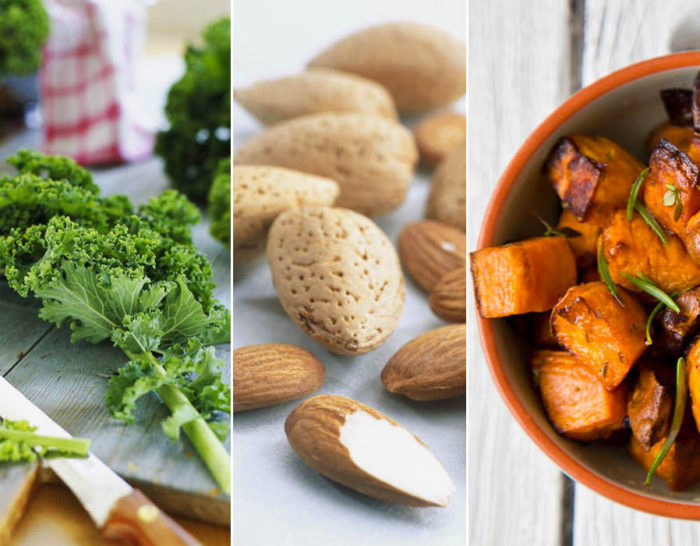People ignored good and healthy eating in the past and instead concentrated their efforts on treating illnesses and diseases. This has been found to be counterproductive as it is cheaper to prevent a disease than to treat it.
Now that we all are becoming more enlightened as to the reasons why we should pay more attention to what we eat, we need to do the best within our strength to achieve a state of positive health by investing on good food, no matter what it would cost to do so.
But what actually constitutes a good food? What types of foods should we or should we not eat?
Top 5 Foods You Should Be Eating Daily For a Healthy Living
-
Green Beans
Green beans is a proteinous and high-fiber food, which is highly recommended because of its ability to prevent weight gain and also help you lose weight without dieting. Increasing one’s intake of green beans helps in losing weight. If you increase your fiber by 8 grams for every 1,000 calories you take, you will lose about 4½ pounds in the long run.

But should we recommend green beans only because it helps you in losing weight? No, of course! These peas have several health gains which you should benefit from. Studies have shown that green beans can cut the risk of diabetes, obesity and heart disease, including death rates.
According to the United States Department of Agriculture (USDA) National Nutrient Database, one cup of canned snap green beans has: 2.6 grams of fiber, 28 calories, 1.94 grams of sugar, 5.66 grams of carbohydrate, 0.55 grams of fat, and 1.42 grams of protein. It equally has some quantities of magnesium, potassium, calcium, Vitamin A, folate, phosphorus, iron, riboflavin, thiamin, and vitamin K.
Research by the Oregon State University shows that green beans contain chlorophyll, which is capable of blocking the carcinogenic impacts of heterocyclic amines produced when meats are grilled at a high temperature.
If you have never given green beans a thought, this should really interest you. Research conducted by the Harvard Medical School showed that green beans have the ability to promote fertility in women due to its rich iron content.
A cup of green beans gives you about 10 percent of folic acid and 6 percent of the iron your body needs. Since these are both needed for a viable pregnancy to be sustained, eating green beans remains a good source of getting them.
-
Spinach
Spinach is one of the plants that can easily give you omega-3 fatty acids and folate, which play a significant role in preventing stroke, heart diseases, and osteoporosis. In addition, folate helps to improve blood supply to the hindmost parts of the body, thereby assisting in guarding you against sexual problems that are related to age.

Besides, spinach contains lutein, a compound that plays a role in preventing the degeneration of muscles; hence it is referred to as the muscle builder. Lutein is equally believed to assist in sex drive. Taking a cup of fresh spinach or half a cup cooked daily would help to do the magic for your body.
Similarly, a recent study showed that “women with hair loss have considerably lower vitamin D2 and iron levels than age-matched controls. Spinach is equally perfect for fighting hair loss because it’s rich in iron and high in vitamin C, which helps in iron absorption.
You may not be lucky enough to have spinach in your area. In that case, alternatives you can take include romaine lettuce, kale, and bok choy.
-
Tomatoes
We have seen how useful spinach is. Another highly useful vegetable our body needs is the tomato. They are used in different sauces at home. From stew to salads, fried eggs, sandwiches, and other dishes, tomato plays a role in giving them their palatable tastes.

But that is not why we really need lots of tomatoes in our daily meals. Red tomatoes (which are the preferred ones) contain a lot of antioxidant lycopene, which plays a role in reducing cancers of the prostate, bladder, stomach, and skin. Moreover, lycopene lessens the risk of coronary artery disease.
Processed tomatoes also contain high amounts of lycopene, which the body can easily absorb whether from the fresh or processed sources. A glass of tomato juice or 22 mg of lycopene daily is enough to take care of your body needs. If tomatoes are hard to get in your location, you can get lycopene also from pink grapefruit, guava, Japanese persimmon, Red watermelon, and papaya.
-
Eggs
Eggs are known to contain high-quality animal proteins as well minerals and vitamins. Eggs contain almost everything needed to make a balanced diet. They easily fill you up and stop you from eating those junk foods that hardly have anything beneficial to add to your body.

Just an egg or two in the morning taken with whole grain toast or fresh fruit is enough to provide your body all it needs to kick start the day and keep going.
An egg has vitamin A, vitamin B2, B6, and B12, vitamin D, vitamin K, calcium, folate, zinc, phosphorus, selenium, essential fatty acids, protein, and other trace nutrients. This is why doctors and nutritionists recommend that a child should have at least an egg a day.
One other thing about egg is that it contains biotin and B vitamins that assist in minimizing hair loss. Since egg contains high-quality proteins, it plays a role in helping the hair to grow faster and healthier.
-
Oats
Oats have a high level of soluble fiber, which helps in reducing the incidence of heart disease. They are approved by the FDA because of their numerous health benefits. Oats have plenty carbohydrates, but the fibers ensure that the sugars are released slowly, thereby reducing the possibility of developing diabetes.

Half a cup serving of oats contains 10 grams of protein, which helps in delivering energy that’s friendly to the muscles.
Similarly, Oats are rich in fiber, omega-3 fatty acids, iron, and polyunsaturated fatty acids (PUFAs), and zinc which help to stimulate hair growth, making it healthy and thick.
You don’t have oats in your area? Don’t worry! You can get its same benefits from wild rice, quinoa, and flaxseed.
Conclusion
If you really want to enjoy a healthy life, you need to eat good foods daily. Money alone or drugs cannot give you guaranteed health, only the practice of eating super foods or quality diets can.


